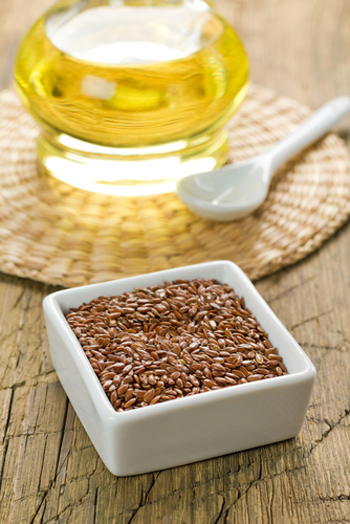By Janis Jibrin, M.S., R.D., Best Life lead nutritionist
How’s your fat? Don’t worry—I’m not talking about your thighs or belly. I’m referring to the fat on your fork. You’ve heard about all the great things omega-3 fats can do for you, including boosting your mood, keeping your brain sharp and reducing your risk for heart disease. One reason for its stellar health creds: It fights chronic inflammation. But it can’t do its job if it’s outnumbered by its chief rival—omega-6 fats.
These two polyunsaturated fats compete for entry into your cells, and for most Americans, omega-6 is winning handily. Our bodies evolved to thrive off an omega-6 to omega-3 ratio anywhere from 1:1 to 4:1. Instead, the ratio is 16:1 or higher. That imbalance may literally be killing us.
Where does all the omega-6 come from? Soybean oil is a major source; processed and fast foods are rife with it, and it’s the oil in “vegetable oil” sold in the supermarket. Meanwhile, we eat very few omega-3 rich foods, like fatty fish, chia seeds and flaxseed.
Here’s how to get back in balance:
Use extra virgin olive oil (EVOO) as your primary fat. Although it has no omega-3 fats, it’s rich in monounsaturated fat, which should be the primary fat in your diet, and it’s low in omega-6 fats. Use it in salads, sautéing, broiling, even for baking. It doesn’t work for deep frying because it burns—but you’re not doing much of that, I assume! I recommend it over another mono-rich oil—canola oil—because EVOO contains antioxidants and other beneficial compounds.
Limit high omega-6 oils, which includes corn, cottonseed, grapeseed, safflower, sunflower, soybean (“vegetable oil”) and walnut oil. (“High oleic” sunflower and safflower are OK because they’re bred to be high in monounsaturated fat.) Although soybean and walnut oils contain omega-3s, their omega-6 levels are so high that you’re still better off limiting them.
Have chia seeds, ground flaxseed or walnuts daily. These contain alpha linoleic acid (ALA), the plant form of omega-3s. Sprinkle a tablespoon on cereal, soups, salads, pilafs, shakes and other foods.
Have two to three servings of fatty fish weekly. Arctic char, salmon (fresh or canned), sardines and tuna (go for canned “skipjack” or “light,” which have less mercury than albacore) are very rich in eicosapentaenoic acid (EPA) and docosahexaenoic acid (DHA). These two omega-3s are even more potent health-promoters than the plant-based ones.
Also Read:
No Bake Cookie Chia Bar Recipe
